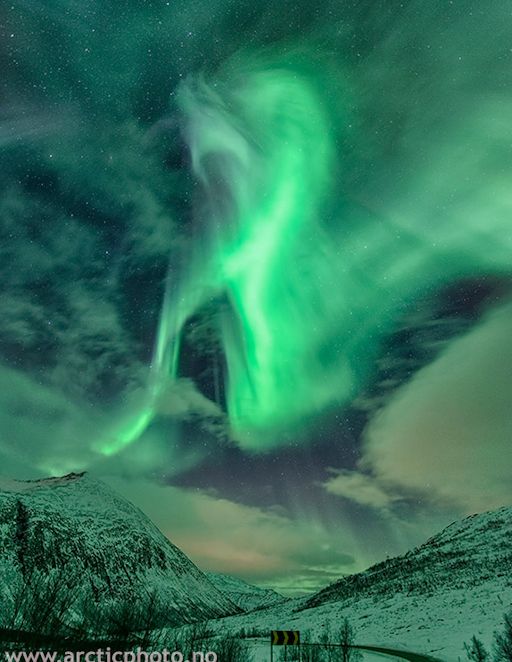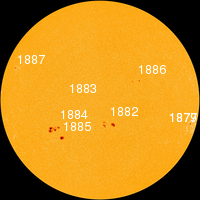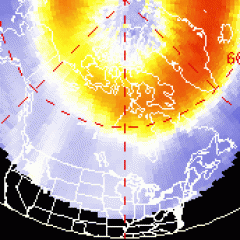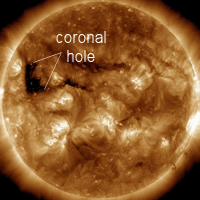CHANCE OF FLARES: Sunspot AR1884 has a complex magnetic field that harbors energy for strong eruptions, and it is almost directly facing Earth. NOAA forecasters estimate a 50% chance of M-class solar flares and a 10% chance of X-flares on Oct. 31st. Solar flare alerts: text, voice.
SPOOKY AURORAS: High-latitude sky watchers should be alert for auroras on Halloween. A CME is expected to hit Earth's magnetic field on Oct. 31st, possibly sparking polar geomagnetic storms. In northern Norway, the show got started early with this display on Oct. 30th:
"We witnessed a very powerful outburst of auroras with bright colours," says photographer Bjørn Jørgensen of Tromsø. And that was before the CME arrived...
As Oct. 31st begins, indicators still suggest a CME is approaching Earth. NOAA forecasters expect a G1-class geomagnetic storm when it arrives. Watch for the shock here. Aurora alerts: text, voice.

Solar wind
speed: 418.4 km/sec
density: 6.5 protons/cm3
explanation | more data
Updated: Today at 1524 UT
X-ray Solar Flares
6-hr max: M1 1351 UT Oct31
24-hr: M1 1351 UT Oct31
explanation | more data
Updated: Today at: 1500 UT
![]()
Daily Sun: 31 Oct 13
Sunspot AR1884 has a 'beta-gamma-delta' class magnetic field that harbors energy for X-class solar flares. Credit: SDO/HMI
![]()
Sunspot number: 132
What is the sunspot number?
Updated 31 Oct 2013
Spotless Days
Current Stretch: 0 days
2013 total: 0 days (0%)
2012 total: 0 days (0%)
2011 total: 2 days (<1%)
2010 total: 51 days (14%)
2009 total: 260 days (71%)
Since 2004: 821 days
Typical Solar Min: 486 days
Update 31 Oct 2013
The Radio Sun
10.7 cm flux: 153 sfu
explanation | more data
Updated 31 Oct 2013
![]()
Current Auroral Oval:
Switch to: Europe, USA, New Zealand, Antarctica
Credit: NOAA/POES
![]()
Planetary K-index
Now: Kp= 2 quiet
24-hr max: Kp= 3 quiet
explanation | more data
Interplanetary Mag. Field
Btotal: 9.5 nT
Bz: 5.0 nT north
explanation | more data
Updated: Today at 1525 UT
![]()
Coronal Holes: 31 Oct 13
A new coronal hole is emerging over the sun's eastern limb. Credit: SDO/AIA.





